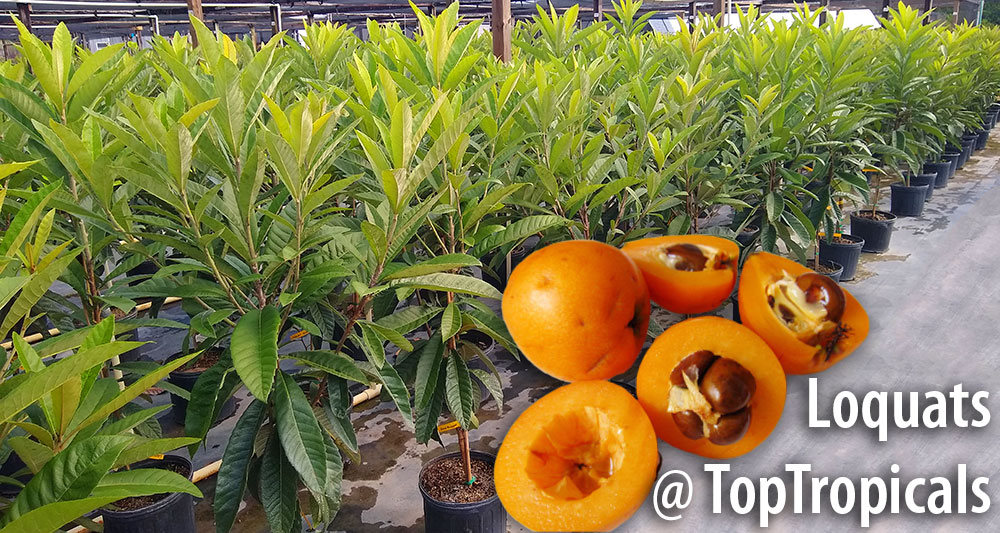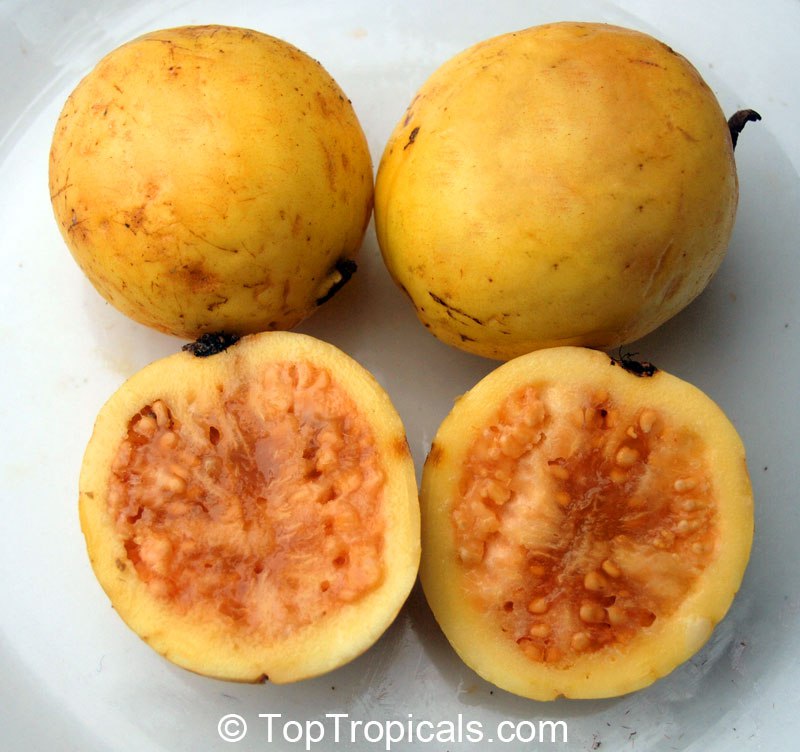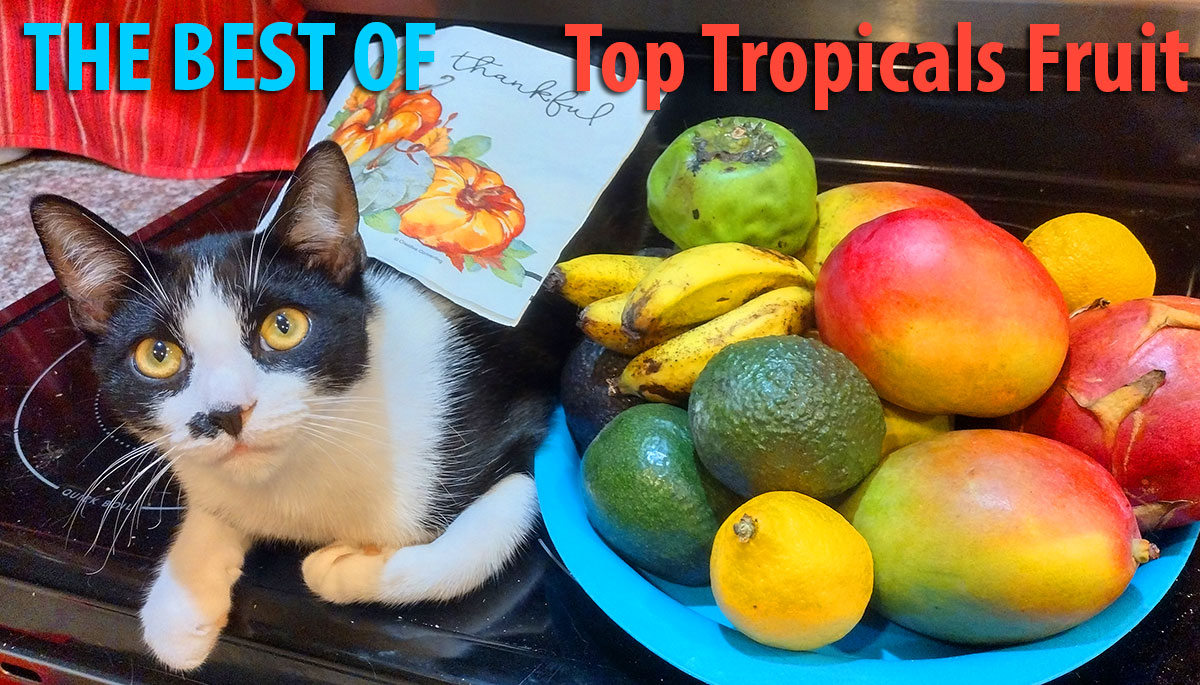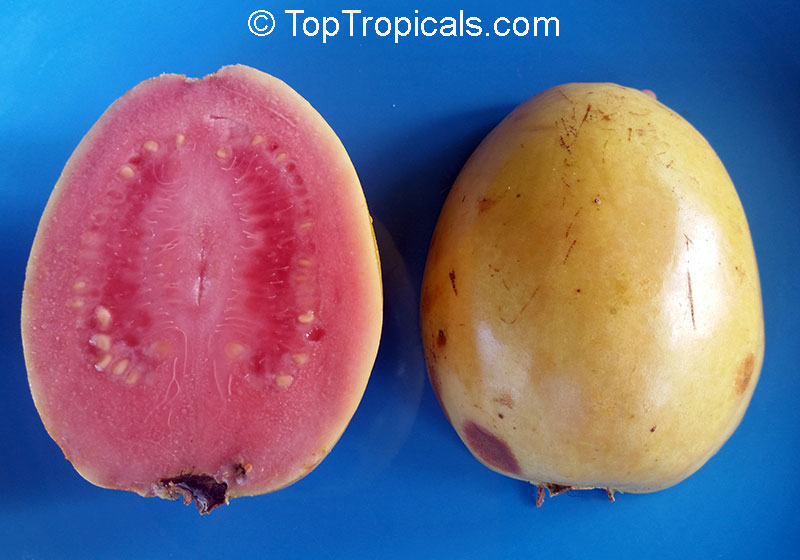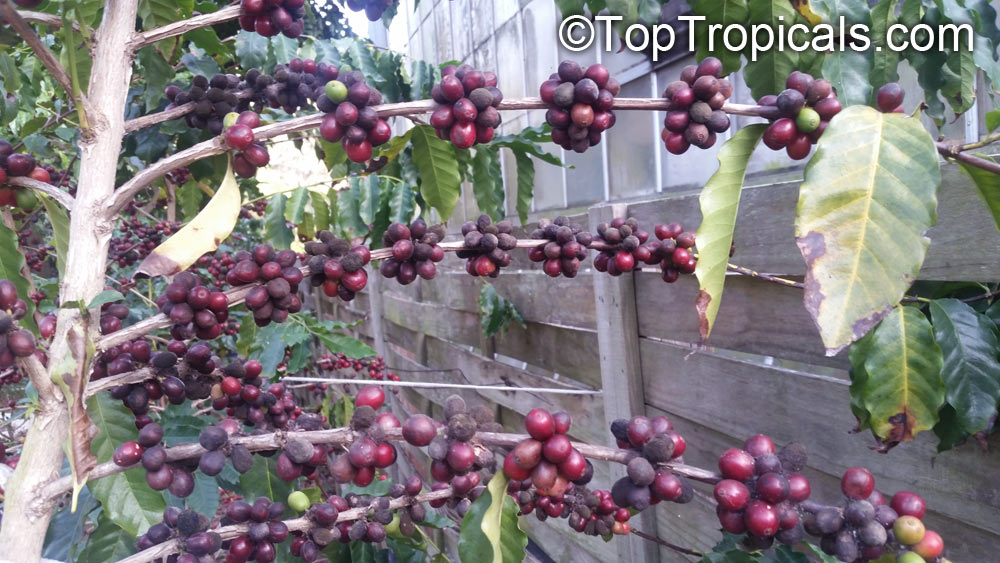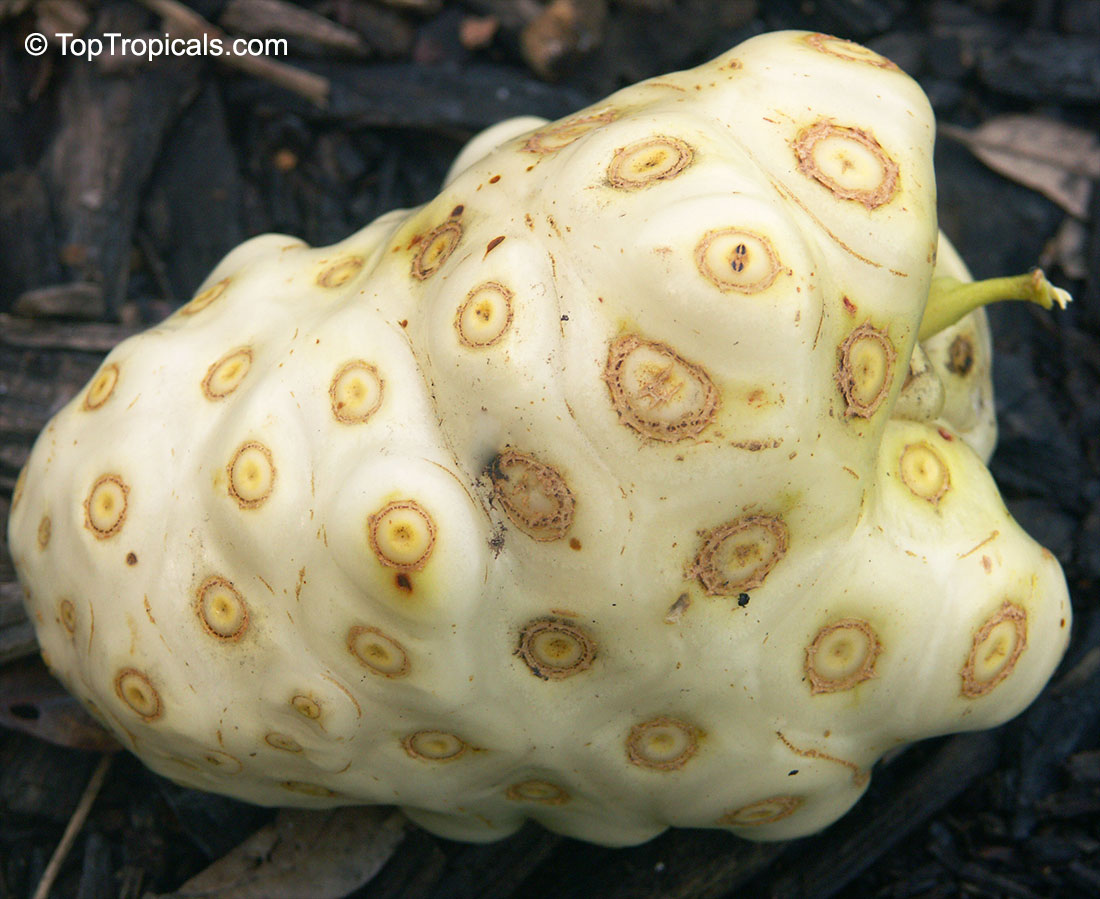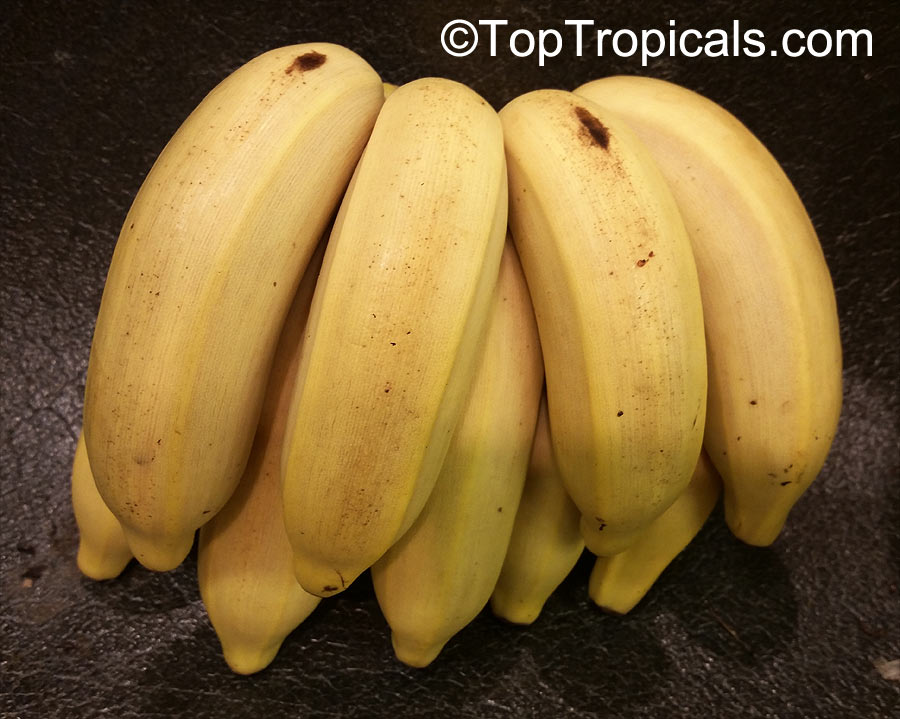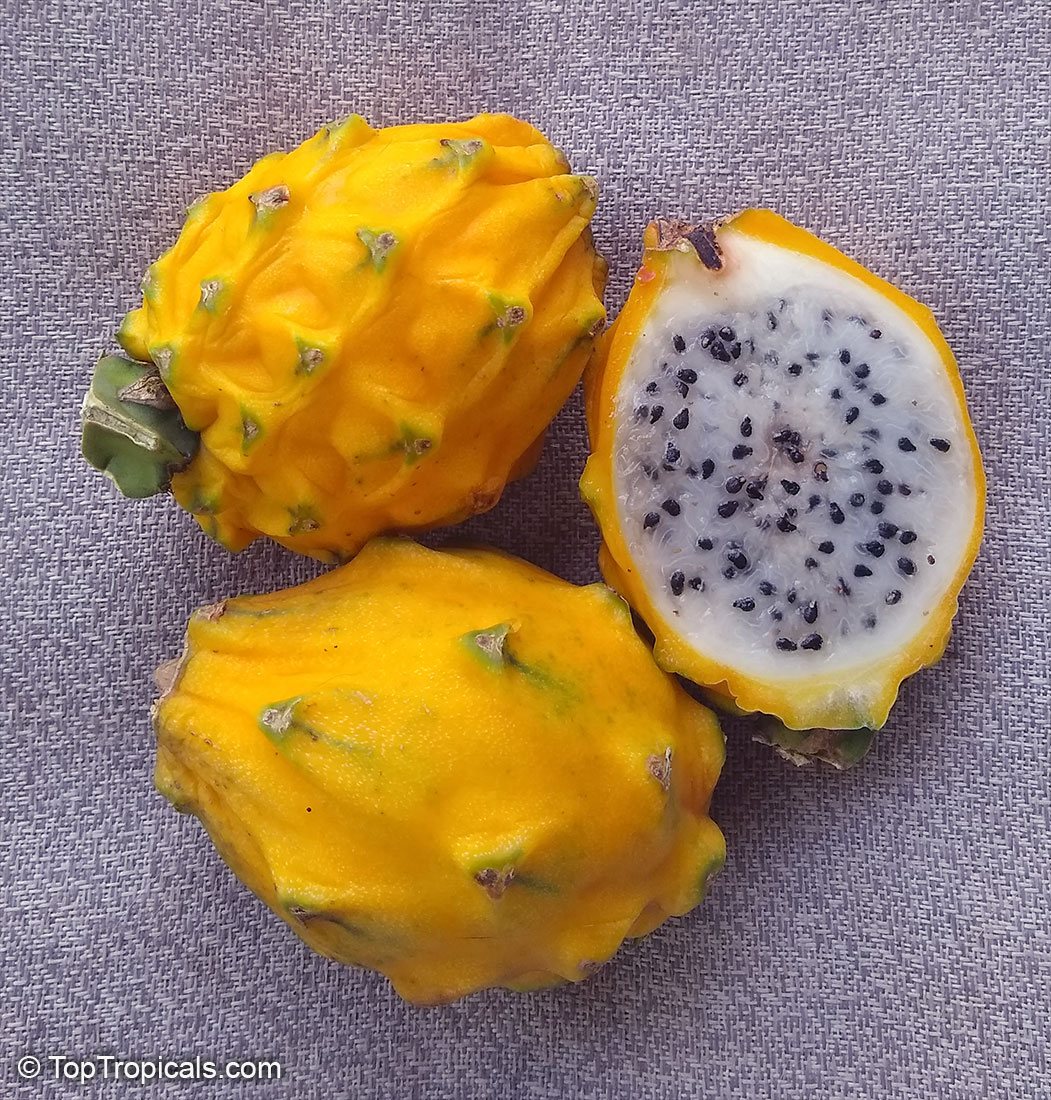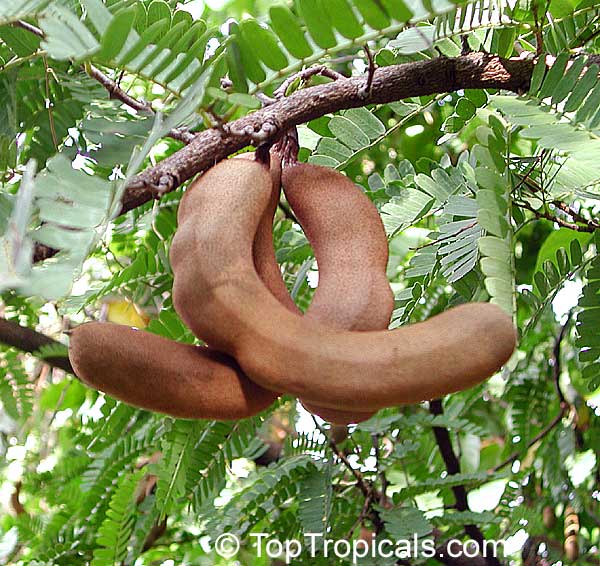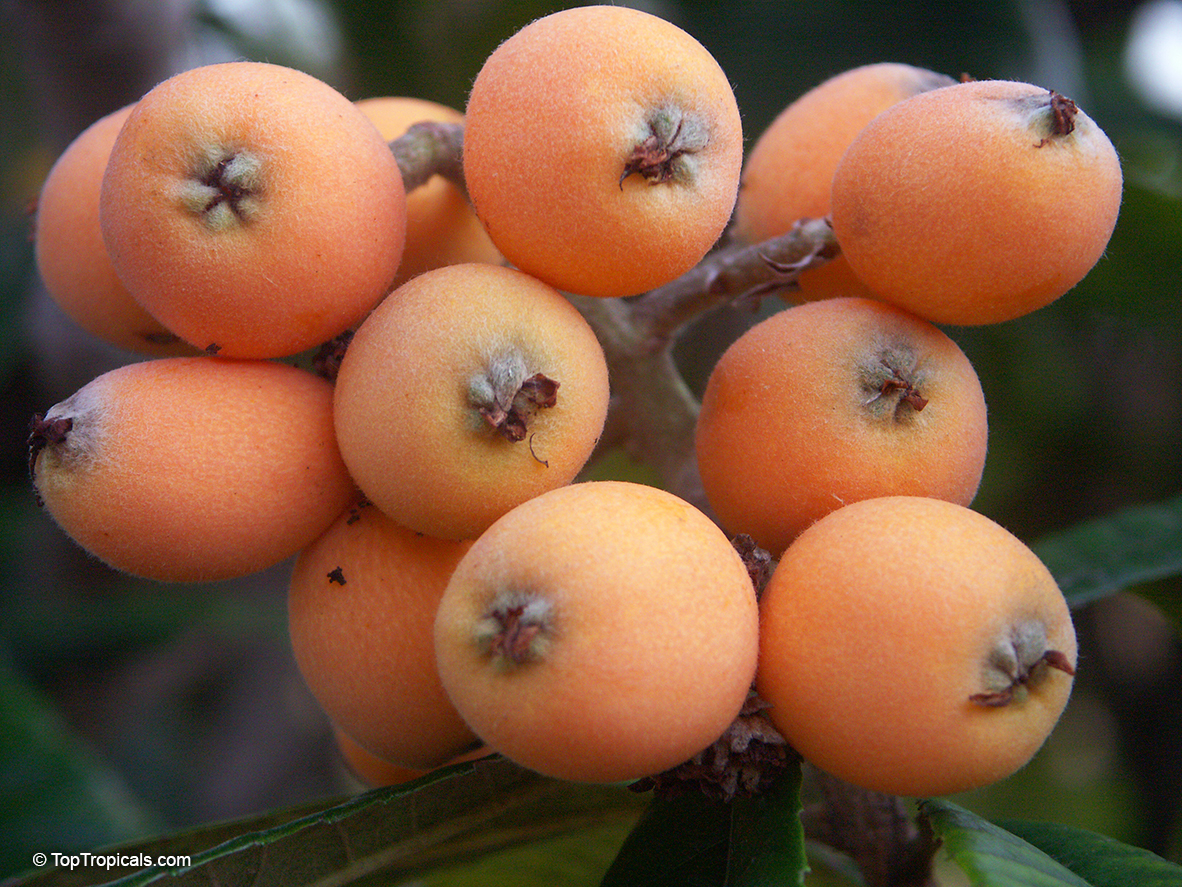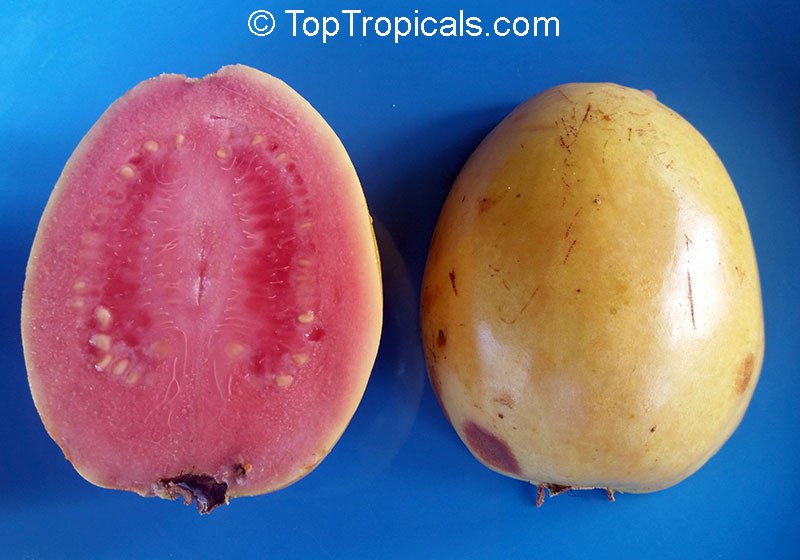Garden Blog - Top Tropicals
How to grow a Guava Tree: Practical Guide to Growing Guava
Guava (Psidium sp.)
- 🍑 Guava Trees (Psidium sp.) are beloved for their flavorful fruit and easy-growing nature. These fast-growing trees are reliable producers and can thrive in a variety of climates, making them a favorite among home gardeners. Guavas are compact and can be grown in containers, making them suitable for small spaces and urban gardens.
- 🍑 Light and Soil
- 🍑 Pruning tips
Guava trees thrive in full sun, requiring at least 6-8 hours of direct sunlight daily to produce the best fruit. They prefer well-draining soils rich in organic matter but are adaptable to a range of soil types, including sandy or loamy soils. Slightly acidic to neutral soil is ideal. While guavas tolerate poor soils, enriching the soil with compost or manure will improve growth and yield.
Pruning is essential for maintaining the shape, size, and productivity of guava trees.
· Frequency: Prune guavas annually, ideally after the fruiting season, to encourage new growth and improve airflow.
- · Remove dead, diseased, or crossing branches to maintain tree health.
- · Shape the tree to allow sunlight to penetrate the canopy, which enhances fruit production.
- · For container-grown guavas, keep the tree compact by trimming back vigorous shoots regularly.
- 🍑 Guava in containers
- 🍑 Watering
Guavas are well-suited to container growing. Compact varieties like the "Nana" guava are ideal for pots. Use a large container (at least 15-20 gallons) with good drainage. Fill it with a high-quality potting mix enriched with organic matter. Place the container in a sunny location and water consistently. Regular pruning helps maintain a manageable size and promotes fruiting in container-grown guavas.
· Guava trees require consistent watering, especially during dry periods and the fruiting season. While they can tolerate short periods of flooding, ensure the soil is not waterlogged. Water deeply once or twice a week, depending on your climate.
- · Fertilize guavas 3-4 times a year during the growing season with a balanced fertilizer rich in potassium and phosphorus to promote flowering and fruiting. Adding organic matter like compost or manure annually boosts soil fertility and improves yields.
- 🍑 Harvesting
· Guava trees are quick to fruit, often producing their first harvest within a year of planting. For container-grown trees, fruiting can start in even smaller pots, such as 1-gallon containers.
- · Signs of ripe guava fruit include:
- · Harvest ripe guavas by hand or with pruning shears. Consume fresh or use them to make juices, jams, or desserts.
- A change in color from green to yellow (depending on the variety).
- A sweet, fruity aroma.
- Slight softness when gently pressed.
- 🍑 Health Benefits of Guava
· Guava is a nutrient powerhouse, offering numerous health benefits:
- · Vitamin C: Boosts the immune system and helps protect against colds and infections.
- · Potassium: Supports healthy blood pressure levels.
- · Antioxidants: Contribute to glowing skin and may reduce the risk of cancer.
- · Fiber: Aids digestion and helps regulate blood sugar levels.
- 🍑 Popular Varieties of Guava
· Tropical Guava (Psidium guajava): Sweet and aromatic, suitable for warmer climates.
- · Cattley Guava (Psidium littorale): Cold-hardy with a slightly tart flavor.
- · Cas Guava (Psidium friedrichsthalianum): Known for its sour taste, perfect for juices like Costa Rica’s traditional "Agua de Cas." Cold hardy, disease resistant and vigorous, productive variety.
- · Pineapple Guava (Feijoa sellowiana): Fruity and floral, thriving in cooler climates.
🍑 Additional Tips
- · Guava trees are relatively pest-resistant but may require monitoring in humid climates for mealybugs. Use neem oil if needed.
- · Planting multiple guava varieties ensures a continuous supply of fruit.
- · With their fast growth, compact size, and delicious fruit, guava trees are a fantastic addition to tropical garden, greenhouse or patio.
📚 More from previous posts about #Guava
🛒 Shop Guava Trees
#Food_Forest #Guava
🔴 Join 👉 TopTropicals
Date:
Discover 10
best fruit trees to grow
in Florida and Southern landscapes
Q: We recently moved into our new home in Florida, and the property is a great size - 5 acres - but it currently has no trees, just a few palms. I'm looking to plant some productive fruit trees to start building our own Food Forest. What fruit trees would you recommend as a good starting point?
A: With five acres of space, you have a fantastic opportunity to create a fruitful garden that can provide for your family for many years to come. Below are our top recommendations for must-have, easy-to-grow fruit trees that thrive in Florida's climate, grow quickly, and start producing right away.
1. Mango Tree
Mango trees (Mangifera indica) are a must-have for any Florida garden, embodying the essence of the Sunshine State with their delicious and nutritious fruit packed with vitamins and fiber. These fast-growing, low-maintenance trees thrive with minimal water and are heat-tolerant. Grafted varieties produce high-quality, fiberless fruit in just 2-3 years, while dwarf "condo" mangoes are perfect for smaller spaces or containers. While young trees need frost protection, mature trees handle cold better. Grafted mangoes offer rich taste that you won't find in commercially grown, fibrous varieties, ensuring a sweet and vibrant harvest from your own garden.
2. Avocado Tree
The Avocado tree (Persea americana) is an essential addition to any tropical or subtropical garden. Known for its health benefits and superfood status, it's a favorite fruit that's not only productive but also a beautiful ornamental tree. Some avocado varieties are more cold-tolerant than mango trees, with the ability to survive temperatures below 25F. While many enjoy growing avocado from seed, only grafted trees guarantee quality fruit and immediate production, as seedlings can take 7-8 years to bear fruit. To successfully grow avocado, ensure good drainage by planting on a raised mound (4-6 inches) and keep the soil consistently moist. There are also compact varieties like Wurtz and Fuerte that thrive in containers or small spaces, making them ideal for patios and small gardens.
3. Tropical Cherries
Tropical cherries, such as Cherry of the Rio Grande (Eugenia aggregata), Grumichama (Eugenia brazilensis), Pitomba (Eugenia luschnathiana), and Black Surinam Cherry (Eugenia uniflora var. Lolita), are popular and easy-to-grow fruit trees that offer fast growth and excellent fruit production. These compact, versatile trees thrive in both the ground and containers, starting to produce fruit almost immediately. Eugenias are low-maintenance, requiring minimal water, thriving in various soil types, and being pest-free. They are heat-tolerant and can endure cool winters, surviving light frosts. Birds love the fruit, but don't worry - there will always be plenty for everyone.
4. Barbados Cherry Tree
Barbados Cherry (Malpighia glabra), also known as Acerola, is a tropical cherry renowned for having the highest vitamin C content of any fruit. This nutrient-packed fruit is perfect for jellies, jams, and freezing without losing its vitamin C. The Barbados Cherry is a fast-growing, dense shrub that fruits multiple times a year, providing abundant harvests for gardeners seeking quick results. It thrives in alkaline soil, tolerates drought, and is relatively cold-hardy, withstanding light freezes. Birds love the fruit, making it a great addition to wildlife-friendly gardens. The dwarf variety, Nana, with its small leaves and fruit, is perfect for containers, borders, or even bonsai, adding ornamental value to any space.
5. Noni Tree
The Noni Tree (Morinda citrifolia) is a top superfood plant that makes a fantastic addition to any Southern garden. Known for its numerous medicinal benefits, Noni fruit offers anti-inflammatory properties, relief from arthritis, and support for conditions like diabetes, metabolism, and weight loss. It's even believed to help fight cancer. Noni trees grow quickly and begin producing fruit within 2 years from seed. This tough, resilient plant thrives in poor soil, endures summer heat, and withstands drought conditions. Despite its tropical appearance, Noni is surprisingly cold-hardy, recovering well after leaf damage in cooler weather. In addition to its health benefits, the Noni tree has ornamental value, with large, waxy leaves and unique fruit, where the flower appears to grow directly on the fruit!
6. Macadamia Nut Tree
The Macadamia Nut Tree (Macadamia integrifolia) is a fantastic addition to any garden, allowing you to grow these delicious, high price tag, nutrient-rich nuts right at home. These trees are cold-hardy, grow quickly, and thrive in all Florida soil types. Once established, they are productive and can tolerate both flooding and drought. Older trees can survive colder winters, while young trees need protection from temperatures below 25-26F. Macadamia trees like plenty of water and a special fertilizer program, including liquid fertilizers and microelements, to ensure healthy root development and optimal production. Aside from being rich in healthy fats, vitamins, and minerals, macadamia nuts offer numerous health benefits, such as improved digestion, heart health, weight management, and blood sugar control. They are also packed with tocotrienols - antioxidants which may protect against cancer and brain diseases.
7. Papaya Tree
Papaya trees (Carica papaya) are resilient, easy to grow, and produce fruit year-round. Rich in papain, a digestive enzyme, papayas are a superfood that promotes gut health. These fast-growing trees often begin producing fruit within the same year they're planted, providing quick rewards for gardeners. Many varieties, especially dwarf papayas, are space-efficient, reaching only 6-8 feet tall while still yielding large crops, making them perfect for small gardens. Surprisingly hardy for a tropical plant, papayas can withstand light freezes and strong winds (tested in hurricanes!). While they are self-fertile, planting 2-3 different cultivars improves pollination and increases yields. "Solo" cultivars, with their smaller, round or oval fruits, are sweet and less susceptible to fruit flies.
8. Guava Tree
Guava trees are beloved for their flavorful fruit, commonly used in juices, drinks, and desserts. Popular varieties include Tropical Guava (Psidium guajava), Cattley Guava (Psidium littorale), Cas Guava (Psidium friedrichsthalianum), and Pineapple Guava (Feijoa sellowiana). Despite their tropical nature, guavas are surprisingly cold-hardy, suitable for cooler climates and occasional frost. These trees thrive in moist conditions and can tolerate some flooding, while their compact growth makes them easy to maintain at any height or shape. Guavas are fast-fruiting, often producing fruit within a year of planting, and even some varieties in 1 gal containers. The dwarf Nana variety is perfect for container culture, producing full-sized fruit in a compact form. Guava trees are mostly pest-resistant, though mealybugs may require occasional treatment with neem oil in humid, rainy areas. Planting multiple guava trees ensures a continuous supply of fresh, juicy fruit and delicious guava juice for everyone to enjoy.
9. Jackfruit Tree
The Jackfruit tree (Artocarpus heterophyllus) is a striking, fast-growing tree known for producing the largest fruit grown on a tree, making it a showstopper in any garden. Nutrient-packed and often used as a meat substitute in South Asian cuisine, Jackfruit is also delicious in curries, chutneys, and as dehydrated chips. These trees grow quickly, have large waxy leaves, and can be maintained at a compact height of 7-8 feet, making them ideal for smaller spaces and easier cold protection. Despite being a tropical species, Jackfruit trees are relatively cold-tolerant and can survive light frost (although on the account of production volume), with established trees being more hardy than seedlings. Jackfruit trees begin producing fruit within 3-4 years from seed, and varieties come true to seed, eliminating the need for grafting, though it can be done for specific varieties.
10. Loquat Tree
The Loquat tree (Eriobotrya japonica) is a fast-growing, drought-tolerant, and highly cold-hardy tropical fruit tree that thrives in Florida gardens. Loquats are heavy producers, with juicy, aromatic fruit that ripens from early spring to early summer, offering a delicious apricot-like flavor. This compact tree is perfect for small gardens, beginners, and those with limited space. Loquats are undemanding, thriving in any soil and withstanding summer heat, winter cold, heavy rains, and occasional flooding. Nutrient-rich, they are high in sugar, acids, vitamins B and C, minerals, and pectin. Loquats are versatile, enjoyed fresh or used in fruit salads, jams, jellies, chutneys, pies, sauces, and even wine-making, and they are often used as a natural sweetener.
When you are in the mood for something special - you need a Loquat Liquor
🍑 Loquat tree is an excellent choice for any garden, as it is quite cold hardy, drought-, poor soil- and salt tolerant. The delicious fruit look and taste similar to apricots, but there is only one problem: there are too many of them! Make Loquat the perfect fruit for an easy home winery...
🍹 Loquat Liquor recipe
Wash loquat fruit and slit in 4-5 places. You may leave seeds in for Apricot-nutty flavor similar to Amaretto. Combine fruit with vodka and sugar in a wide mouth jar and cover. Stir fruit once a day until sugar is dissolved. Then stir once a week for 4 weeks. Drain liquid and strain through fine cheesecloth. Enjoy!
You can dispose the used fruit but we usually give it a second life: add water, bring to boil, let sit, chill, and it will make another (almost non-alcoholic) drink!
✔️ 3 quarts of loquat fruit- ✔️ 1 quart vodka
- ✔️ 3 cups sugar
- ✔️ vanilla to taste (optional)
📚 From previous posts:
🎥 YouTube video about Loquat
📁 Overlooked fruit: tasty Loquat recipes (PDF)
🛒 Shop Loquat varieties
#Recipes #Food_Forest #Loquat
🔴 Join 👉 TopTropicals
From seed to fruit. How to grow Loquat from seeds, step-by-step guide. Part 2: after germination
Continued from previous posts⤴️
- 🍑 4. Transplanting Seedlings
- ▫️When to Transplant: Once seedlings reach about 2-4” (5-10 cm) in height.
- ▫️Transplanting and fertilizing: Move each seedling to its own pot and add controlled release fertilizer (Green Magic is the best), or use liquid balanced fertilizer Sunshine Boosters after 1-2 weeks once the seedlings establish.
- ▫️Watering. Keep soil in a pot slightly moist but not soggy
- ▫️Temperature. Keep seedling warm - above 70F (21C), and protect from extreme heat over 90F (35C) . For small plants, avoid freezing temperatures during winter. As the seedlings get bigger, they get higher drought-, heat- and cold tolerance. Established Loquat trees (2-3 years and older) may take light freezing temperatures.
- ▫️Planting in the ground. You can plant the seedling in the ground when it reaches 2-3 ft tall (50-100 cm) in frost-free areas. During chill winter nights, young seedlings can be cold protected until established.
- 🍑 5. Sunlight Requirements
- ▫️Light Exposure: Loquat established seedlings thrive in full sun but can tolerate partial shade. Start seedlings in bright shade and protect from afternoon hot sun to avoid leaf burn. Once seedlings are established and new growth appears (2-4 weeks), gradually move them to full sun.
- ▫️Why adequate sunlight (full sun) is important:
- promotes healthy growth
- helps to avoid fungus and insect problems
- is critical for future flowering and fruit production
🍑 6. Fruit production
- ▫️Loquat seedlings start producing seed within 3-4 years from seed, providing adequate sunlight, warm temperatures and regular irrigation.
- ▫️Grafted Loquats start producing right away or the next year
- ▫️Fruit will develop over the winter and ripen from March through May depending on location
🛒 Shop Loquat Trees and enjoy fresh fruit benefits
📚 Learn more:
- 🟡about #Loquat
- 🟡A young Loquat tree is fruiting
- 🟡Ten best fruit trees to grow in Florida and Southern landscapes. # 10: Loquat Tree
- 🟡Loquat – the Symbol of Prosperity
- 🟡Learn more about Loquats
- 🟡10 best fruit trees to grow in Florida and Southern landscapes
🎥 YouTube video about Loquat
📁 Overlooked fruit: tasty Loquat recipes (PDF)
#Food_Forest #Loquat
🔴 Join 👉 TopTropicals
Date:
Grow your own food:
How hardy is a Loquat tree?
Q: I am looking for a fruit tree for my backyard that is low maintenance, fast fruiting, and can take some cold (I live in Orlando FL and we do get occasional frost in winter). I like the taste of Loquat fruit, it reminds me of apricots. How cold hardy is this tree?
A: Loquat tree is a very good choice for Florida gardens. It can
take both cold and heat and produces lots of tasty fruit right away. Last
winter when we had a record freeze in our area with a couple of nights around
25F, the only trees that didn't get any damage at all were Loquats and
Macadamias, and those were still young, newly planted 4 ft trees.
To learn more about Loquat trees, check out this
">video and article: Golden Loquat - the symbol of Prosperity.
What Guava variety is the best for Guava Wine
- 🍷 Araca Pera, or Brazilian Guava tree (Psidium x angulatum), is a unique Guava hybrid of a flavorful wild guava from the Brazilian Amazon which is rare in cultivation.
- 🍷 These fruit are 1.5-2", with an acidic, sour guava-like flavor. Its juice is concentrated and must be diluted and sweetened to produce a delicious drink.
- 🍷 It is the major source of a special Guava Wine production. Our favorite Guava Wine is from Schnebly Redland's Winery - this is where we obtained the seeds from their mother plants. This refreshing and vibrant rose wine is full of flavor and has a bouquet that never stops.
- 🍷 The fruit is processed into ice cream sorbet, gelatins and candies.
- 🍷 A great container specimen or a bushy tree for frost-free gardens.
📚 More about Guavas from previous posts:
- 💋 How to grow guava tree for Juice
- 💋 The most wanted collectible Honey Moon Guava
- 💋 Top 10 fast-fruiting trees: #2. Guava
- 💋 Costa Rican Cas Guava
- 💋 Guava for Drinking
- 💋 Guava for Juicing
🛒 Shop Guava trees
#Food_Forest
🔴 Join 👉 TopTropicals
This is how a young Loquat tree is fruiting
A young Loquat tree fruiting
For the previous posts⤴️
📚 Loquat in previous posts:
- 🟡about #Loquat
- 🟡Ten best fruit trees to grow in Florida and Southern landscapes. # 10: Loquat Tree
- 🟡Loquat – the Symbol of Prosperity
- 🟡Learn more about Loquats
- 🟡10 best fruit trees to grow in Florida and Southern landscapes
🎥 YouTube video about Loquat
📁 Overlooked fruit: tasty Loquat recipes (PDF)
🛍 Shop Loquat Trees and enjoy fresh fruit benefits
#Food_Forest #Loquat
🔴 Join 👉 TopTropicals
Date:
Ten
top fruiting plants you'll ever need
for your health benefits
Q: I planted Mango and Avocado trees, and I still have room for more trees but want to use the space wisely. What other trees should I plant to get the most benefits out of the fruit?
A: Everyone loves planting Mango or Avocado trees for their well-known benefits. But did you know that adding a variety of other fruit trees to your garden can expand those benefits even more? If you plant just one of each of these 10 trees, you'll have a complete spectrum of nutrients and health-boosting ingredients you ever need. With a diverse range of healthy fruits, you'll boost your diet, improve your health, and elevate your lifestyle. Let's check out the TOP TEN most rewarding and useful fruit...
1. Guava
Guava is rich in vitamin C, which boosts the immune system and helps protect
against colds and infections.
Guava helps regulate blood sugar levels, making it a good option for people
with diabetes.
Its potassium content helps maintain healthy blood pressure.
Guava's antioxidants, like lycopene and vitamin C, contribute to glowing
skin and may reduce the risk of cancer.
Guava is eaten fresh, made into juices, jams, and jellies, or added to
desserts and smoothies.
2. Coffee
Coffee is widely enjoyed as a beverage and is used in various desserts and
drinks.
It is rich in antioxidants, which may reduce inflammation and lower the
risk of chronic diseases.
It improves focus and mental alertness due to its caffeine content.
Coffee boosts metabolism and aid in fat burning, supporting weight
management.
3. Noni
Noni
is known for its anti-inflammatory properties and may help reduce joint
pain and arthritis symptoms.
Fresh noni fruit and juice are popular in traditional herbal medicine and
drinks.
It boosts the immune system due to its rich vitamin C content.
Noni juice is used traditionally to improve digestion and fight infections.
4. Papaya
Papaya is a popular ingredient in salads, smoothies, and tropical desserts.
It contains enzymes like papain that aid digestion and reduce bloating.
It is high in vitamin C and vitamin A, the antioxidants in papaya may
protect against heart disease and reduce cancer risk.
5. Banana
Bananas
are rich in potassium, which helps regulate blood pressure and supports
heart health.
They provide a quick source of energy and are great for post-workout
recovery.
The fiber in bananas aids digestion and promotes gut health.
East them fresh, add to smoothies, bake into breads and desserts, or use in
various savory dishes.
6. Dragon fruit
Dragon
fruit is often used in smoothies, fruit salads, and refreshing drinks.
It is high in fiber, aiding digestion and promoting gut health.
Low in calories and packed with nutrients, it's great for weight
management.
7. Tamarind
Tamarind is a common ingredient in sauces, chutneys, and beverages.
Rich in antioxidants, it protects the liver and reduces inflammation.
It contains natural compounds that help lower cholesterol and improve heart
health.
Tamarind has a mild laxative effect, aiding digestion and relieving
constipation.
8. Loilita (Surinam) Cherry
Surinam cherry is rich
in vitamin C, boosting the immune system and skin health.
Its antioxidants reduce inflammation and protect against free radical
damage.
It contains fiber, which supports healthy digestion.
Surinam cherries are used in jams, sauces, and desserts or eaten fresh.
9. Nescafe
Nescafe - Mucuna pruriens - is used in herbal supplements or ground into powder for teas and health drinks.
It is known for its potential to boost dopamine levels, improving mood and reducing stress.
It supports cognitive function, muscle growth and increases energy levels.
10. Loquat
Loquat are very popular and are eaten fresh or used in making jams, jellies, pies, and fruit salads.
Loquat is rich in vitamin A, supporting eye health.
It contains antioxidants that help fight inflammation and reduce the risk of chronic diseases.
The fiber in loquats aids digestion and helps maintain healthy blood sugar levels.
By planting these 10 diverse fruit trees, you'll not only enjoy a delicious and abundant harvest but also ensure your garden provides all the nutrients needed for a healthier, more vibrant life.
Ten best fruit trees to grow in Florida and Southern landscapes
# 8: Guava Tree.
- 🍉 Guava Tree (Psidium sp.) - Guava trees are beloved for their flavorful fruit, commonly used in juices, drinks, and desserts.
- 🍉 Popular Varieties: include Psidium guajava (Tropical Guava), Psidium littorale (Cattley Guava), Psidium friedrichsthalianum (Cas guava), and Feijoa sellowiana (Pineapple Guava).
- 🍉 Cold Hardy: Despite its "Tropical" name, the Tropical Guava is relatively cold-hardy, and other varieties are even hardier, suitable for cooler climates with occasional frost.
- 🍉 Water Needs: Guava trees like water and can tolerate some flooding.
- 🍉 Compact Growth: Guavas are medium size bushes or trees that can be easily maintained at any height and shape.
- 🍉 Fast Fruiting: Guava trees are quick to fruit, often within a year of planting, and some start fruiting in containers as small as 1 gallon.
- 🍉 Dwarf Variety: The Nana variety is perfect for container culture, producing full-sized fruit in a compact form.
- 🍉 Pest Control: In humid areas with rainy seasons, check for mealybugs, which can be controlled with neem oil as needed.
- 🍉 Endless Supply: Planting multiple guava trees ensures a constant supply of fresh, juicy fruit and flavorful guava juice loved by kids and adults.
📚 Learn more from previous posts:
🛒 Shop Guava varieties
#Food_Forest #Guava
🔴 Join 👉 TopTropicals
What is your favorite Guava variety?
Our top pick? Tikal Guava!
Okay, we'll admit it - the tree growth habit can be pretty weird: branches grow at some interesting 90-degree angles, giving it a bit of a wild, chaotic vibe. Think Barbados Cherry bush - if you've seen that unruly spectacle! 😰
But let's focus on what really matters: the fruit. Tikal produces the best pink guava, no contest! It is disease-resistant, fast-growing, super sweet, and boasts very few seeds - huge bonus! Plus, Tikal is a reliable producer, making it perfect for beginners or anyone eager for quick, delicious results. 🌟
📚 More about Guavas from previous posts:
- 💋 What Guava variety is the best for Guava Wine
- 💋 How to grow guava tree for Juice
- 💋 The most wanted collectible Honey Moon Guava
- 💋 Top 10 fast-fruiting trees: #2. Guava
- 💋 Top 10 fruit you'll ever need for your health benefits: #1. Guava
- 💋 Costa Rican Cas Guava
- 💋 Guava for Drinking
- 💋 Guava for Juicing
- 💋 Pineapple Guava
🛒 Shop more Guava varieties
#Food_Forest #Guava
🔴 Join 👉 TopTropicals













